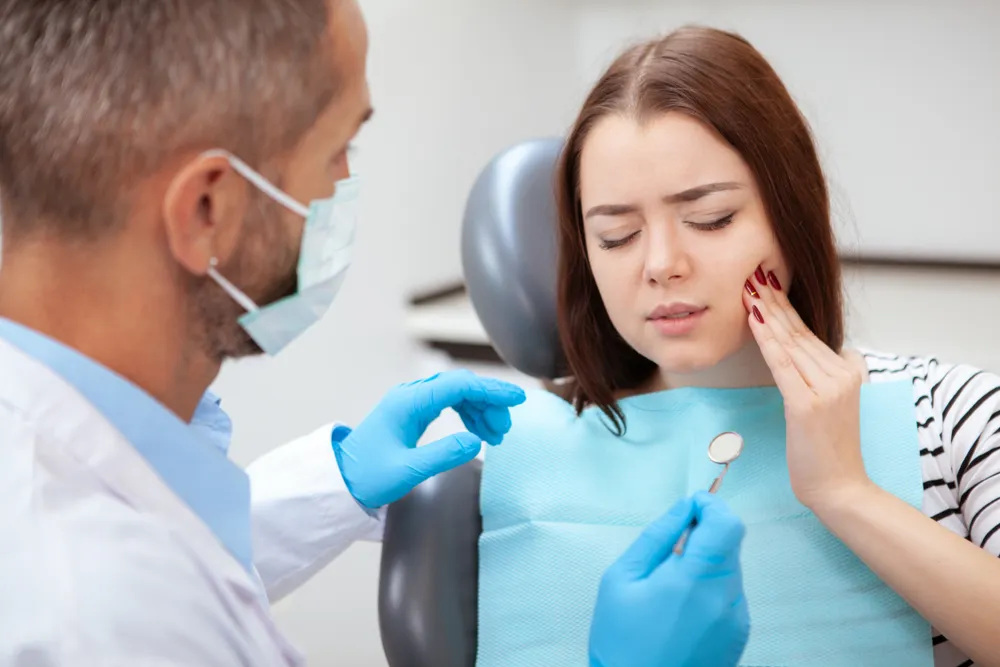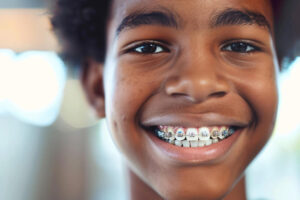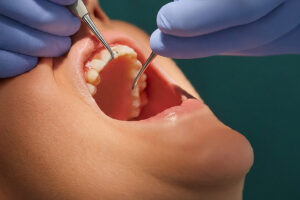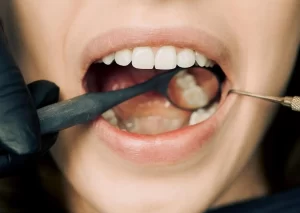Why No Dairy after Tooth Extraction

Tooth extractions, while common, need a period of healing and care to prevent complications such as infections or dry socket.
Among the various post-operative instructions given by dental professionals, dietary restrictions play a crucial role in ensuring a smooth recovery.
One specific guideline that often surprises patients is the recommendation to avoid dairy products immediately following a tooth extraction.
This article delves into the reasons behind this advice, exploring the relationship between dairy consumption and the healing process after dental surgery.
From the risk of bacterial growth to the potential for impacting the clotting process, we will uncover why steering clear of milk, cheese, yogurt, and other dairy products can be beneficial in the days following your procedure.
Table of Contents
Tooth extraction procedure and recovery
Tooth extraction is a common dental procedure performed for various reasons, including tooth decay, infection, overcrowding, or as preparation for orthodontic treatment.
The Procedure
- Preparation: Before the extraction, the dentist or oral surgeon will review your medical history and take X-rays to plan the best approach for removing the tooth.
- Anesthesia: To minimize discomfort, local anesthesia is administered around the extraction site. In some cases, especially for impacted teeth or multiple extractions, sedation or general anesthesia may be used.
- The Extraction: For a simple extraction, the dentist will use an instrument called an elevator to loosen the tooth and forceps to remove it. Surgical extractions, required for broken teeth or those not fully emerged from the gum, involve making an incision in the gum and removing the tooth in pieces if necessary.
- Post-Extraction: Immediately after the tooth is removed, a gauze pad is placed over the extraction site to help stop bleeding and promote clot formation. In some cases, stitches may be required.
Recovery
- Immediate Aftercare: Follow your dentist’s instructions to ensure proper healing. This includes biting on gauze to control bleeding and applying ice to reduce swelling.
- Diet: Stick to soft foods and liquids for the first 24 hours. Avoid hot beverages, alcoholic drinks, and using a straw, as these can disrupt the clotting process.
- Pain Management: Over-the-counter pain relievers are usually sufficient to manage discomfort. Your dentist may prescribe medication for more severe pain.
- Oral Hygiene: While you should avoid the extraction site during the first 24 hours, it’s important to keep your mouth clean. Gently rinse with salt water or an antiseptic mouthwash as recommended by your dentist.
- Activity: Rest for the first 24 hours and avoid strenuous activities for a couple of days to reduce bleeding and swelling.
Complications to Watch For
- Dry Socket: A painful condition that occurs if the blood clot fails to form or is dislodged, exposing the bone.
- Infection: Signs include fever, severe pain, and swelling. Antibiotics may be prescribed to manage an infection.
Follow-Up
Your dentist may schedule a follow-up appointment to ensure proper healing and remove any stitches. Contact your dentist if you experience severe pain, swelling, or signs of infection during your recovery.
Why no dairy after tooth extraction
Avoiding dairy products after a tooth extraction is a precautionary measure recommended by some dental professionals to ensure optimal healing.
While not universally mandated, this advice is grounded in several considerations related to the nature of dairy products and the healing process.
Here’s why avoiding dairy might be beneficial in the days immediately following a tooth extraction or wisdom tooth removal:
1. Risk of Infection
Dairy products, especially those that are not pasteurized, can harbor bacteria which could potentially infect the extraction site.
The mouth is already susceptible to infections post-extraction, and introducing bacteria through dairy consumption could increase this risk.
2. Impact on Clot Formation
The primary stage of healing after an extraction involves the formation of a blood clot at the site. This clot is crucial as it protects the underlying bone and nerves, and aids in the formation of new tissue.
There’s a concern that consuming thick or creamy dairy products could physically dislodge this clot (similar to the risk posed by using a straw), leading to a painful condition known as dry socket.
3. Mucous Production
Dairy products can stimulate the production of mucous in some people.
Excessive mucous in the throat and mouth post-extraction can feel uncomfortable and may complicate the healing process by making it difficult to keep the wound area clean.
4. Allergic Reactions
For individuals with mild dairy sensitivities (who might not otherwise avoid dairy), consuming these products when the body is in a state of recovery could exacerbate inflammation or trigger allergic reactions, potentially complicating the healing process.
Alternatives to Dairy
Given the potential issues associated with dairy consumption after tooth extraction, patients are often advised to opt for non-dairy alternatives to meet their nutritional needs during the initial healing period.
Foods and beverages that are rich in vitamins and minerals yet gentle on the extraction site include:
- Broths and clear soups
- Non-dairy milk alternatives (such as almond, soy, or oat milk)
- Smoothies (made without dairy products)
- Mashed fruits and vegetables
Recommendations can vary based on individual health, the complexity of the extraction, and the dentist’s professional judgment. Some patients may be advised that consuming dairy is fine, particularly if it’s part of a balanced diet that supports healing.
Always follow the specific post-operative care instructions provided by your dental professional, including dietary recommendations, to ensure a smooth and speedy recovery.
Read more: How Long After Wisdom Teeth Removal Can I Eat a Burger?
How soon can I drink milk after tooth extraction
The timeline for reintroducing dairy products, including milk, into your diet after a tooth extraction can vary based on individual healing processes and the specific instructions given by your dental professional.
A general guideline is to wait at least 48 hours before consuming milk and other dairy products.
This precaution helps ensure that the initial critical phase of healing, particularly the formation and stabilization of the blood clot at the extraction site, is not disturbed.
Key Considerations for Reintroducing Milk:
- Blood Clot Stability: The first 24 to 48 hours post-extraction are crucial for blood clot formation. Dislodging this clot can lead to complications such as dry socket, a painful condition that can delay healing.
- Inflammation and Infection Risk: The risk of infection is highest immediately after the extraction. Introducing dairy products too soon could potentially increase this risk, especially if the dairy is not pasteurized.
- Individual Healing Rate: Healing rates vary from person to person. Some individuals may experience faster recovery and can reintroduce dairy products sooner, while others might need to wait longer.
Recommendations:
- Follow Your Dentist’s Advice: Your dentist or oral surgeon will provide you with tailored advice based on your specific situation. It’s important to follow their recommendations for dietary restrictions and any other post-operative care instructions.
- Start with Caution: When you do start to reintroduce milk, consider beginning with small amounts to ensure it does not adversely affect your healing process.
- Opt for Pasteurized Dairy Products: Choosing pasteurized dairy products can help minimize the risk of bacterial infection.
- Monitor for Any Adverse Reactions: Pay attention to how your body responds to reintroducing milk and dairy. If you experience any issues, such as increased pain or signs of infection, contact your dental professional.
What are the other types of foods to avoid after tooth extraction
In addition to dairy products, there are several other types of foods and beverages you should avoid immediately following a tooth extraction to ensure a smooth recovery:
- Hot foods and beverages: Hot liquids and foods can increase blood flow to the area, potentially dissolving the blood clot that is essential for healing.
- Alcoholic beverages: Alcohol can interfere with the healing process and the effectiveness of any prescribed medications.
- Crunchy and hard foods: Nuts, chips, and hard candies can irritate or damage the extraction site.
- Sticky foods: Foods like caramel or chewing gum can dislodge the protective blood clot.
- Spicy foods: Spicy dishes may irritate the extraction site, leading to discomfort.
- Seeds and small grains: Foods that contain small particles, like sesame seeds or poppy seeds, can get lodged in the extraction site and cause irritation or infection.
Read more: How to Smoke after Tooth Extraction without Getting Dry Socket
Safe Foods After Tooth Extraction
Focusing on soft, nutrient-rich foods can help ensure you’re getting the necessary nutrients without compromising the healing process. Some safe options include:
- Smoothies (avoid using a straw, as the suction can dislodge the blood clot)
- Soups and broths (not too hot)
- Mashed potatoes
- Yogurt (after the initial 48-hour period, if allowed by your dentist)
- Applesauce
- Pudding
- Scrambled eggs
Read more: What to Eat After Wisdom Teeth Removal
How to avoid damaging the extraction site while eating
To ensure a smooth recovery and avoid damaging the extraction site after a tooth extraction, it’s important to follow a careful approach when eating.
Here are some guidelines to help protect the extraction site and promote healing:
Wait Before Eating
To prevent accidentally biting your cheek, tongue, or lip, wait until the numbness from the anesthesia has completely worn off before attempting to eat.
Choose Soft Foods
In the first few days, consume foods that require minimal chewing, such as soups, broths, yogurt, applesauce, mashed potatoes, scrambled eggs, and smoothies. Avoid using a straw, as the suction can dislodge the blood clot at the extraction site.
Eat Slowly and Carefully
Cut food into small, manageable pieces. Avoid chewing directly on the extraction site. Instead, use the opposite side of your mouth.
Avoid Certain Foods
Foods like nuts, seeds, popcorn, chips, sticky candies, and gum can get stuck in or damage the extraction site. Extremely hot foods can increase swelling and disrupt the formation of the blood clot.
Maintain Hydration
Stay hydrated by drinking water or other non-irritating beverages. Avoid alcohol, caffeine, and carbonated drinks in the early stages of healing.
Follow a Gradual Progression
As the extraction site heals, you can slowly start to reintroduce more solid foods into your diet. Pay attention to your body’s response and proceed accordingly.
Practice Good Oral Hygiene
After 24 hours, gently rinse your mouth with warm salt water after meals to help keep the extraction site clean. Avoid vigorous rinsing or spitting to prevent dislodging the blood clot. Brush and floss your teeth as usual, but be very gentle around the extraction site.
Monitor the Extraction Site
Be vigilant for signs of infection or dry socket, such as severe pain, bad taste, fever, or excessive swelling. If you notice any of these symptoms, contact your dentist immediately.
FAQ on Why no dairy after tooth extraction
Is dairy bad after tooth extraction?
Dairy isn’t inherently bad after tooth extraction, but it’s recommended to avoid it for the first 48 hours to reduce the risk of infection and complications like dry socket. Dairy can also promote mucus production, which might feel uncomfortable.
Is it OK to eat yogurt after a tooth extraction?
Yes, it’s generally OK to eat yogurt after a tooth extraction, especially after the initial 24-48 hours, as it is soft and can be soothing. Try to choose plain varieties without added granola or nuts to avoid irritation.
How soon can I eat ice cream after tooth extraction?
You can eat ice cream shortly after a tooth extraction, typically within the first few hours, as its cold temperature can help soothe the area and reduce swelling. Choose smooth, soft-serve types without crunchy mix-ins to avoid irritating the extraction site.
Can you eat a banana after a tooth extraction?
Yes, you can eat a banana after a tooth extraction. Bananas are soft and easy to chew, making them a good option for post-extraction eating, even on the first day. Just make sure to mash it up if chewing is uncomfortable.
Can i eat bread after tooth extraction
It’s best to wait a few days before eating bread after a tooth extraction, as its texture can stick to the extraction site and potentially dislodge the blood clot. Soft, moist bread might be tolerable sooner, but always proceed with caution and based on your comfort level.
Can i drink milk 24 hours after tooth extraction
Yes, you can drink milk 24 hours after tooth extraction, unless your dentist advises otherwise. Milk is generally considered safe and can be a source of nutrition when solid food options are limited.
Can i drink milk 3 days after tooth extraction
Yes, you can drink milk 3 days after tooth extraction. By this time, the risk of complications such as infection or dislodging the blood clot is lower, making it safer to consume dairy products.
Fact Checked
Our dedicated team rigorously evaluates every article and guide to ensure the information is factual, up-to-date, and free of bias.
Updated Regularly
We update our articles and reviews regularly to ensure you have access to the latest data in the dental industry.
The content on Dental3DU’s blog is intended for educational purposes only. This information should not be relied upon as professional medical counsel. Be sure to always consult with your dentist about the dangers and benefits of any medication, treatment or procedure.







